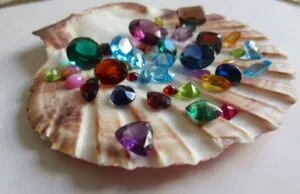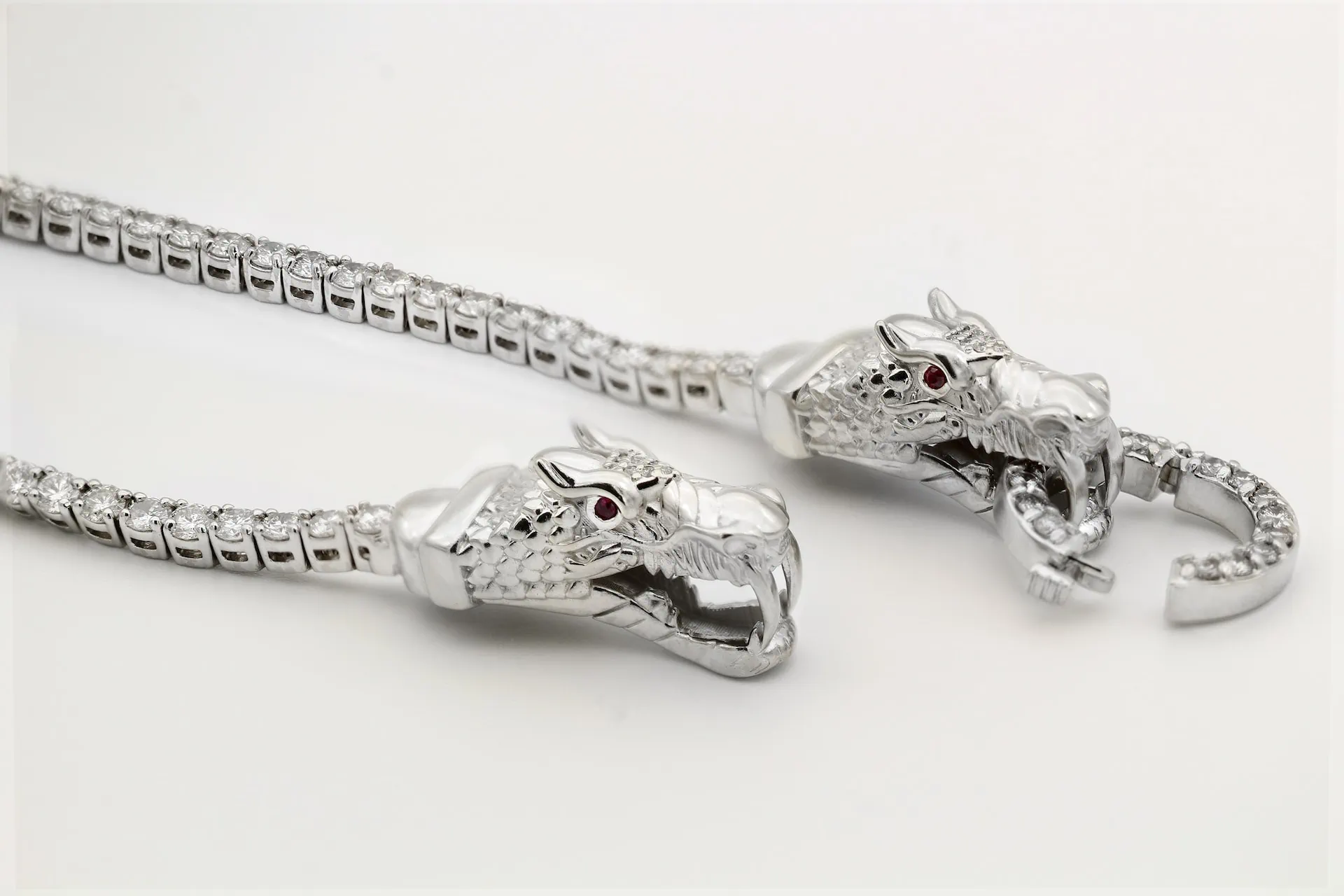
Table of Contents
Rhodium and silver are two silver-hued metals with very different characteristics. While silver can function as a jewelry metal on its own, rhodium is only ever used in jewelry in the form of plating. Sometimes, sterling silver is plated with rhodium to enhance its durability and appearance. Let’s take a look at when and why it might be a good idea to rhodium plate sterling silver jewelry.
Rhodium and Sterling Silver
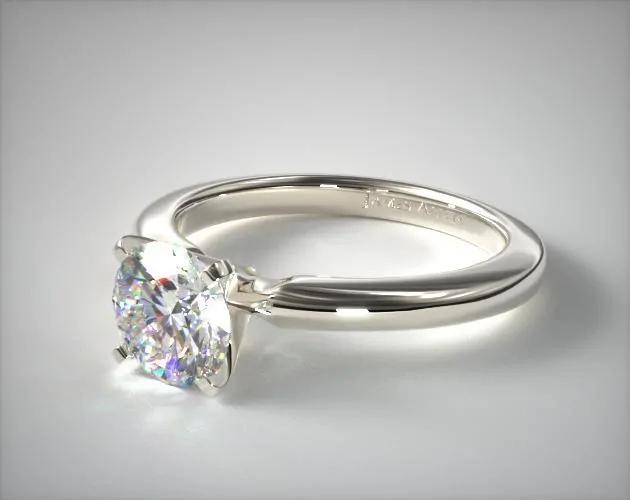
Rhodium is one of the most expensive metal on the planet, even more so than gold or platinum, and is extremely rare. It is hypoallergenic, extremely lustrous, withstands corrosion and is highly durable.
All these qualities make rhodium perfect for jewelry, but because of its hardness and brittleness, as well as the exorbitant cost, it can’t be used in its pure form to make jewelry.
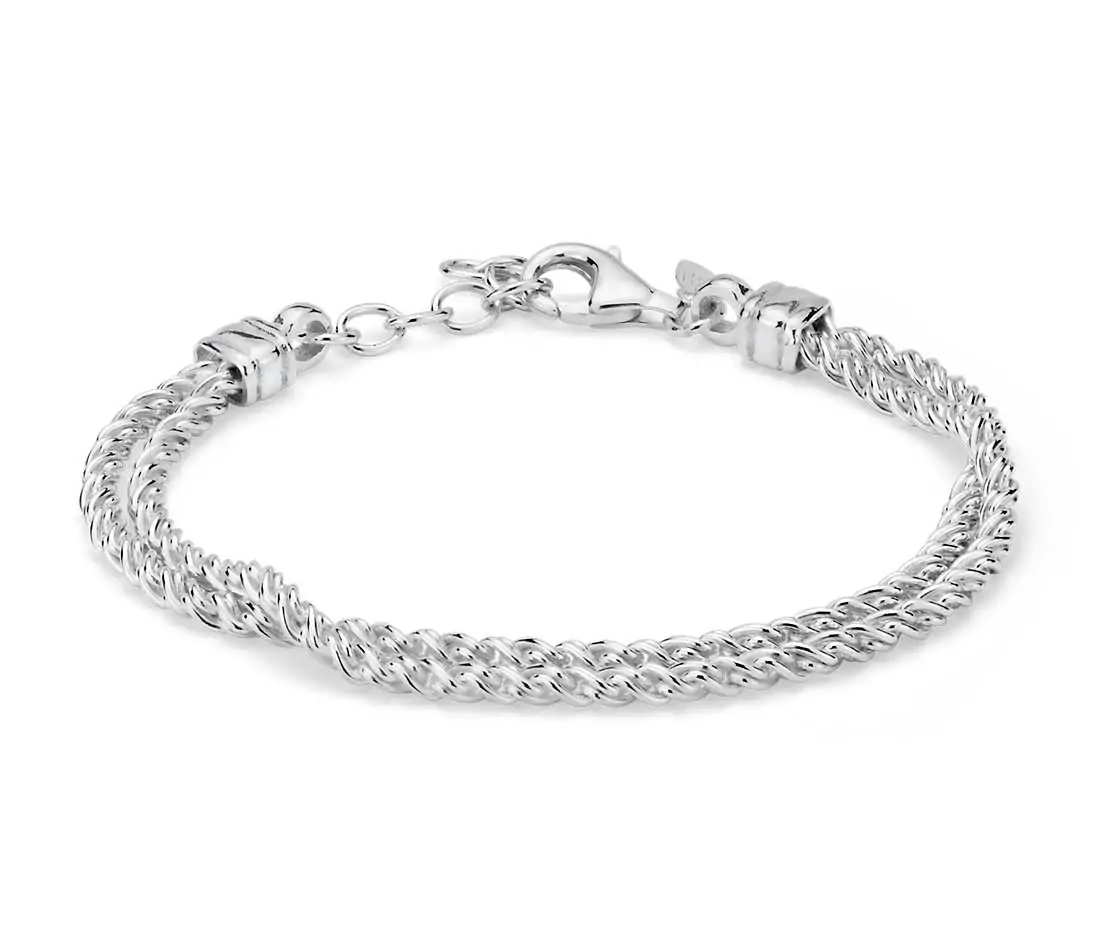
The only way rhodium is used in jewelry is to plate other metals, such as gold, platinum, brass, silver, and palladium, to name a few. This brings us to sterling silver.
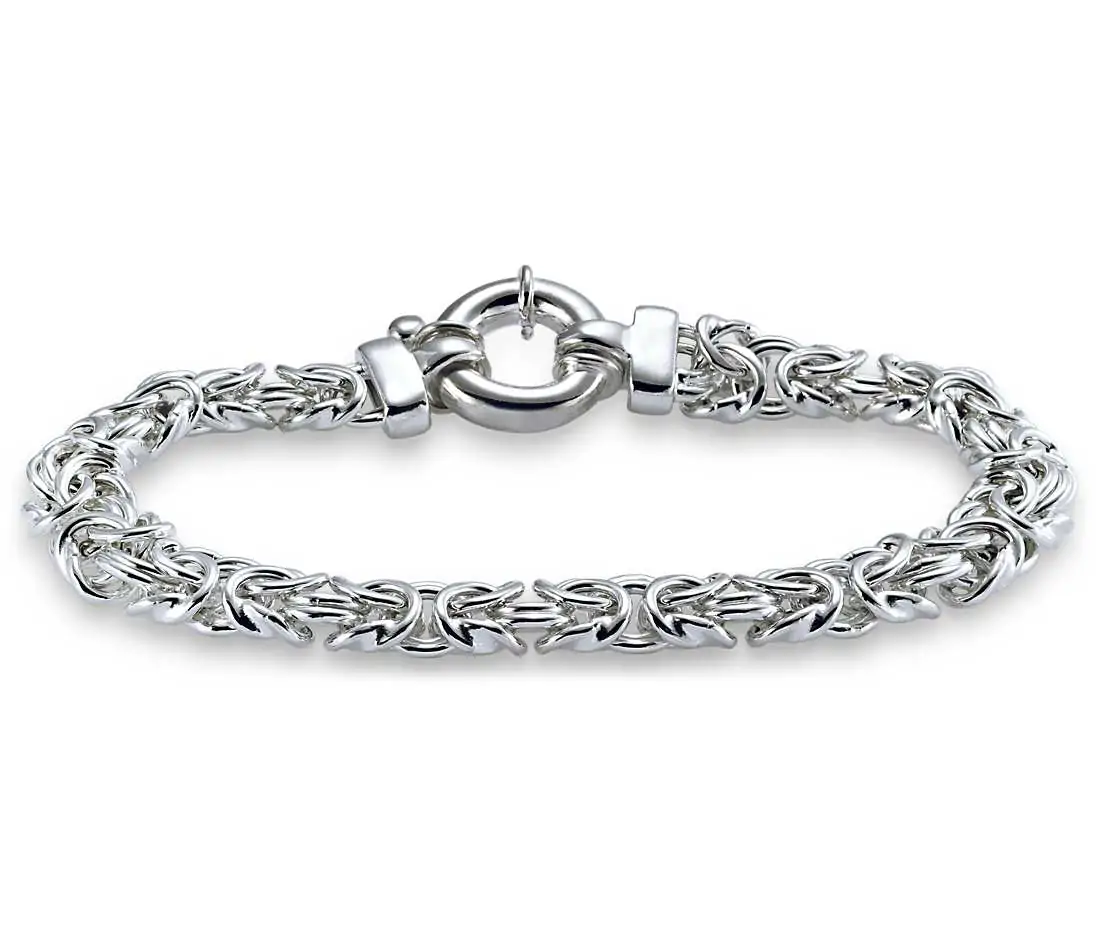
Silver is the least expensive of the precious metals and has been used in jewelry since ancient times. Because pure silver is very soft, it is often alloyed with other metals to make it stronger. One such alloy is sterling silver. Unlike white gold, you don’t have to plate sterling silver because silver is naturally whitish. So, why plate sterling silver with rhodium if it’s already silver-colored?
Why Rhodium Plate Sterling Silver Jewelry?
While silver does not require plating, there are many benefits in having sterling silver jewelry rhodium plated.
1. Rhodium plated sterling silver is tarnish free.
One of the characteristics of silver is that it tarnishes very easily, developing a dark patina over time, and needs to polished in order to retain its shiny luster. Rhodium, on the other hand, is highly tarnish resistant and does not corrode, stain, or change color.
By plating sterling silver with rhodium, tarnishing can be avoided and the piece of jewelry remains white and lustrous much longer. You’ll find that many jewelry designers choose rhodium plating just to avoid silver tarnishing.
2. Rhodium plated silver has a higher shine.
Although sterling silver by itself can be bright and reflective when polished, rhodium plated sterling silver has a higher luster and whiteness which lasts longer than if the piece were not plated. This gives sterling silver a modern look. However, if you prefer the more vintage-like charm of sterling silver and the greyish patina it develops, it’s best not to opt for rhodium plated sterling silver. Instead, you can choose sterling silver and polish it when required.
3. Rhodium plated silver is harder and more scratch resistant.
When sterling silver is rhodium plated, the durability of the jewelry is increased. Rhodium is a hard metal unlike silver which is quite soft. Rhodium plating reduces the likelihood of the piece gaining scratches, making the piece more resistant to scratches.
4. Rhodium plated silver is hypoallergenic.
For those sensitive to metal allergies, sterling silver can sometimes cause reactions, because of potential nickel in the metal. Rhodium plating is hypoallergenic and because it acts as a barrier between the base metal and your skin, it is a good way to reduce the risk of allergic reactions.
Disadvantages of Rhodium Plating
Rhodium plating is permanent but like all types of plating, it tends to flake off over time due to exposure and wear and tear. As a result, rhodium plated sterling silver jewelry may require re-plating after a while, often every 2 years or so. For less exposed jewelry such as earrings or necklaces, replating may only be required about once in 10 years.
The good news is that because sterling silver is white, it will be difficult to see when the plating has worn off, unlike with white gold, where the base metal is yellow-tinged. As a result, you can put off replating for a long time as it’s likely the piece will still look bright and shiny.
Taking Care of Rhodium Plated Sterling Silver Jewelry
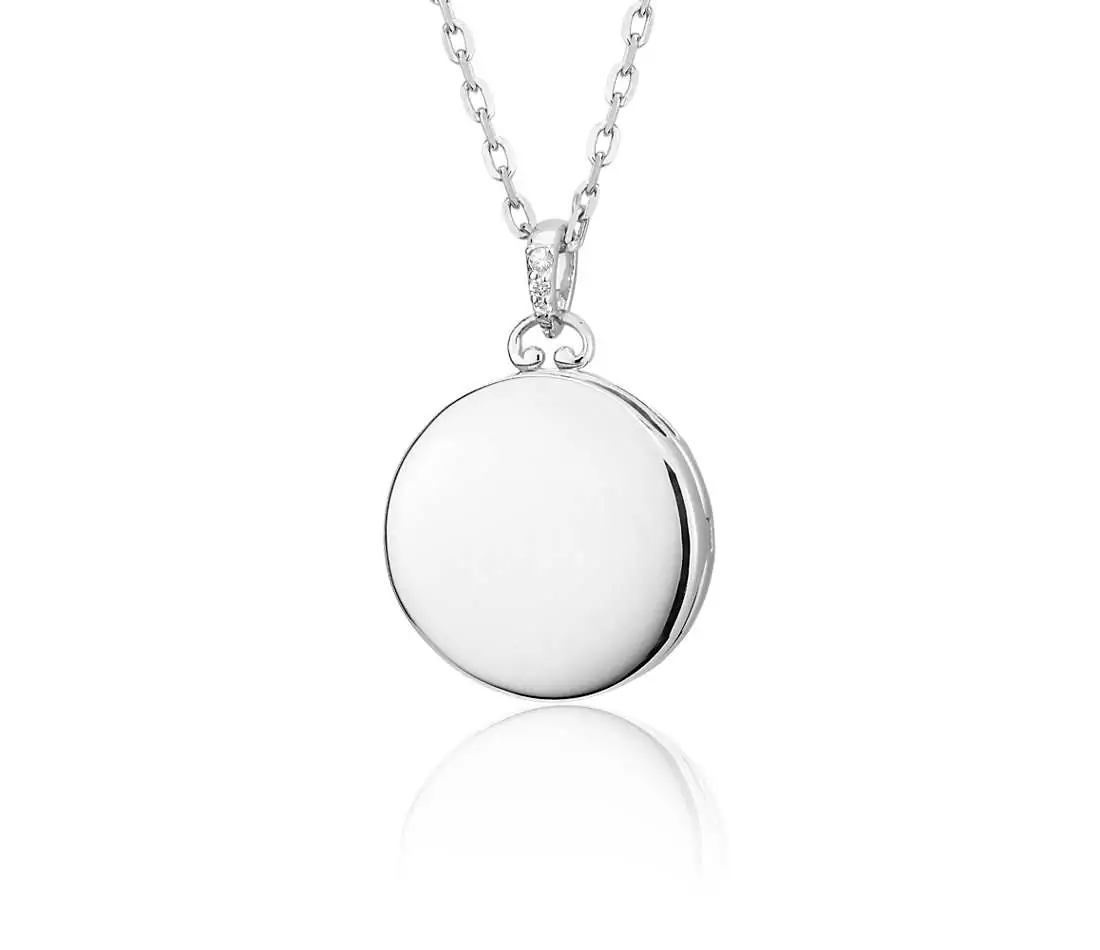
The best way to keep rhodium plated sterling silver jewelry lustrous and reflective is by maintaining it carefully. For this, avoid using harsh chemicals or abrasive equipment on your jewelry. Some people prefer to use toothpaste as a cleaner for sterling silver jewelry but it’s best avoided for rhodium plated jewelry as toothpaste is quite harsh and abrasive.
Opt instead for mild liquid soaps, warm water and soft brushes/cloths when cleaning. While there are special polishing cloths for sterling silver, avoid these with rhodium plated sterling silver jewelry as the cloth can make the rhodium flake off.
Wrapping Up
While sterling silver on its own is a durable, lustrous, and beautiful metal, it can be enhanced with rhodium plating. But if you can increase your budget, white gold is the much better option due to its higher value, durability, and beauty.







